Ready-to-use multichamber bags in home parenteral nutrition – Full Text
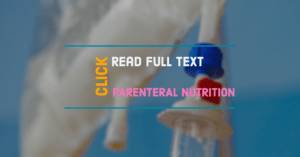
“In conclusion, commercial multichamber bags for HPN in patients with advanced cancer are non-inferior when compared to individual compounded bags in terms of complications” Fernández-Argüeso et al (2024).
Home parenteral nutrition in Italy – Full Text

“This study confirms the importance of setting up and maintaining structured registries to monitor and improve home parenteral nutrition care. Safety outcomes have improved over the years, most likely due to the underlying efficient nursing service” Guglielmi et al (2023).
Home parenteral nutrition study from a national UK IF reference centre
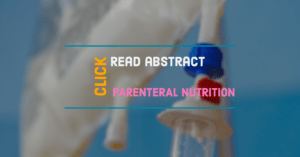
“This is the largest series reporting disease behaviour and long-term outcomes in CD-IF and the first describing prophylactic therapy use. The incidence of disease recurrence was low. Immunosuppressive therapy appears to be safe in HPN-dependent patients with no increased risk of CRBSI” Kopczynska et al (2023).
Micronutrient status of home parenteral nutrition patients – Full Text

“Low and high concentrations were observed in our patients but clinical and demographic factors did not impact consistently on micronutrient concentrations highlighting the importance of ongoing monitoring and adequate supplementation as per ESPEN guidelines” Culkin et al (2023).
eHealth expectations of patients on home parenteral nutrition – Full Text

“Patients on HPN are open to videoconference consultations and using an eHealth platform. Two-thirds have the necessary technical skills including suitable digital devices for an eHealth care” Schönenberger et al (2022).
Informal care in patients receiving home parenteral nutrition

“Caregivers of children with IF on long-term PN provide a significant amount of care to ensure their child remains healthy at home” Belza et al (2022).
Quality of life and home parenteral nutrition
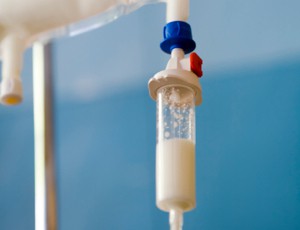
“All six studies suggest that a reduction in HPN frequency may be associated with an improvement in QOL” Stanner et al (2021).
CLABSI in children during home parenteral nutrition
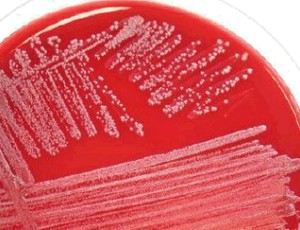
“The aim of our study was to determine clinical findings significantly associated with central line associated bloodstream infection (CLABSI) in children on home parenteral nutrition (PN) managed by our intestinal rehabilitation service” D’Eusebio et al (2021).
Home parenteral nutrition

“We aimed to determine how the underlying diagnosis, complications and survival had changed over the last 36 years in the UK’s largest IF centre” Oke et al (2021).
Home parenteral nutrition in pediatric patients with intestinal insufficiency

The prevalence of patients with long-term PN and their clinical characteristics were identified. No differences were found to support the administration of this treatment in the hospital over the home” Zapata Olivares et al (2019). Abstract: INTRODUCTION: Home parenteral nutrition (HPN) has been shown to offer important benefits for patients and the health system. In […]
Clinical risk factors for the development of candidemia in home parenteral nutrition

The aim of this study was to investigate the relevance of the reported SNPs in patients receiving HPN, and to explore clinical risk factors associated with candidemia” Wouters et al (2019). Abstract: BACKGROUND: Patients receiving home parenteral nutrition (HPN) have an increased risk for central line-associated bloodstream infections (CLABSIs), including candidemia. Recently, 7 single-nucleotide polymorphisms […]
Providing parenteral nutrition at home has significant challenges

Providing parenteral nutrition at home has significant challenges for both patients and providers alike. Some of these challenges are systemic and are secondary to the way the healthcare system is designed to deliver care” Koenen et al (2019). Abstract: Providing parenteral nutrition at home has significant challenges for both patients and providers alike. Some of […]
Repair of central venous catheters in home parenteral nutrition patients

CVC repairs can be performed in the office or on the ward and are cost effective when compared with CVC replacement. When performed by trained clinical staff, the procedures are highly successful and associated with low risk” Salonen et al (2019). Abstract: For patients receiving home parenteral nutrition (HPN), vascular access with a central venous […]
Home parenteral support in patients with incurable cancer
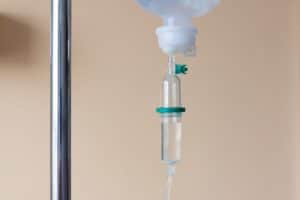
It is uncertain if home parenteral support (HPS) is of advantage in patients with incurable cancer and intestinal failure, functional obstruction or severe malabsorption” Obling et al (2018). Abstract: PURPOSE: It is uncertain if home parenteral support (HPS) is of advantage in patients with incurable cancer and intestinal failure, functional obstruction or severe malabsorption. From […]
What is the impact of home parenteral nutrition on hospital re-admission

Unplanned re-admissions for patients with IF accounted for a third of all hospitalisations in those on HPN and the majority were due to CRBSI” Burden et al (2018). Abstract: INTRODUCTION: Home parenteral nutrition (HPN) provides fluid and nutrition essential for the survival of patients with type 3 intestinal failure (IF). However, it is associated with […]
Long-term study reviews infective vascular access outcomes associated with home parenteral nutrition

The aim of this study was to evaluate catheter-related complications of CVC in patients receiving HPN” Santacruz et al (2018). Abstract: OBJECTIVE: Home parenteral nutrition (HPN) has become a common therapy, with tunneled central venous catheters (CVCs) being the preferred route of administration. Peripherally inserted central catheters (PICCs) have been used increasingly, but whether they […]
ASPEN guidelines for the selection and care of CVAD
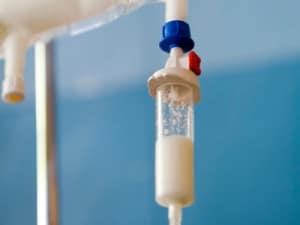
This document represents the American Society for Parenteral and Enteral Nutrition (ASPEN) clinical guidelines to describe best practices in the selection and care of central venous access devices (CVADs) for the infusion of home parenteral nutrition (HPN) admixtures in adult patients” Kovacevich et al (2018). Abstract: This document represents the American Society for Parenteral and […]
Salvaging central venous catheters in home parenteral nutrition

In the past, the standard of care to treat these infections required catheter removal. More recently, several studies have indicated that many CRBSI can be treated without removal of the catheter” Bonnes et al (2018). Abstract: PURPOSE OF REVIEW: Catheter-related blood stream infections (CRBSI) pose a significant risk to patients on home parenteral nutrition (HPN). […]
Article describes the early history of home parenteral nutrition

Technologic advances in the past century have led to the ability to safely deliver parenteral nutrition (PN) to hospitalized patients. Key breakthroughs included the development of saline and glucose infusions, infusion pumps, macronutrients (lipids, dextrose, and amino acids), and central venous catheters” Hurt and Steiger (2018). Abstract: Technologic advances in the past century have led […]
Chronic intestinal failure cost analysis shows decline after first year

HPN related costs accounted for the majority of the total expenses in IF patients. The costs declined after the first year due to a reduction in complications and hospital admissions” Canovaiet al (2018). Abstract: BACKGROUND & AIMS: Chronic intestinal failure is a complex medical condition which is associated with high costs. These patients require long-term […]
Home parenteral nutrition patients participate in an international study on quality of life

The aims of this study were: to re-assess the basic psychometric properties of the HPN-QOL© in a multinational sample of adult patients; to provide a description of QOL dimensions by short and long HPN treatment duration; to explore clinical factors potentially associated to QOL scores” Baxter et al (2018). Abstract: BACKGROUND & AIMS: Home parenteral […]

